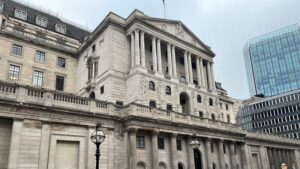Following a standout year for the US, investors in Europe have just witnessed long-awaited QE, while in Japan, investors have been stymied by further taxation and the evolution of Abenomics hitting business and consumer sentiment.
Coming out of the financial crisis, assets have been flooding into equities across the globe, with investors’ more cautious stance pushing them into quality, defensive names that deliver against their income needs – the Unilevers and Diegeos of this world – as described by Pat Ryan, manager of the Lazard Global Equity Income Fund.
He said it has happened at country as well as company level: “That is why the US has done so well is it is seen as having those quality, defensive characteristics.”
The income sector has felt it particularly strongly. Ryan explained as investors fled the bond markets as interest rates were not shifting off their historical lows, yet still had income needs, they moved into the higher yielding stocks – equities with bond-like qualities, or “bond proxies”.
Tom Becket, CIO at Psigma Investment Management, has been shifting his portfolios accordingly.
He said: “We have been seeing extreme inflation in markets very recently. If you look at 10-year yields, they have jumped from 1.6 per cent to 2.16 per cent in just the last couple of weeks, which may have ramifications for other asset classes, particularly those equities that have been outperforming.”
Barclays Capital has suggested the underperformance between cyclicals and defensives has been at a margin that is inconsistent with both economic improvements and earnings estimates.
A note from its global equity team said: “Only through the perspective of the 10-year yield, which in our view, appears to be foretelling a worsening of the economy, does the underperformance look warranted.”
But investors have been paying a premium for these bond proxy sectors – utilities, consumer staples and healthcare, and Scott Berg, who runs the Global Growth Equity Fund at T. Rowe Price, believes this rotation towards cyclicals will balance what had been an “unusually defensive equity market rally”.
Standing by his underweight position in defensive names, Berg said stock-specific opportunities were returning within high-quality cyclical businesses.
“Even without the consideration of earnings expectations, when comparing industrials and consumer discretionary stocks to more defensive peers, valuations are favourable.”
The more defensive nature of the rally could be attributed to a more conservative risk appetite since the financial crisis, which was finally starting to normalise.
“Valuations rising from crisis levels have accounted for the majority of returns for equity investors. However, this is largely a theme of the past as multiples have reached previous cyclical highs in many cases. We are now entering a more complex and stock/industry specific environment.”
But as Lazard’s Ryan explained, the global recovery is set to continue – rates will go up at some point, but the defensive names aforementioned won’t care. They don’t jump when interest rates do. As we see a normalisation of bond yields, they will lose their appeal whereas cyclicals will see their earnings estimates rise as the economy recovery unfolds.
Ryan added: “You should have exposure to both defensives and others – cyclicals with cheap valuations. Once US rates rise, we see the stabilisation of Europe, if China keeps it together, if the macro turns out okay then ultimately we will see a rotation from these bond proxies into cheaper cyclicals and that will be true across the world.”
But will it last? How quick do investors need to be in order to take advantage of this window of opportunity?
It’s hard to say, with the element of surprise somewhat removed these days, but as Becket suggested: “It deserves to be a multi-year rotation but the sell-off could be painful.”
With that in mind, it’s unlikely to be a one-way trade. As sentiment improves and drives stock prices skyward, opportunities will arise but people also tend to overpay for growth, so keeping an eye on fundamentals would be wise.
The more nimble the investment strategy, the better the ability to exploit markets that overreact to bad news, or get carried away.







